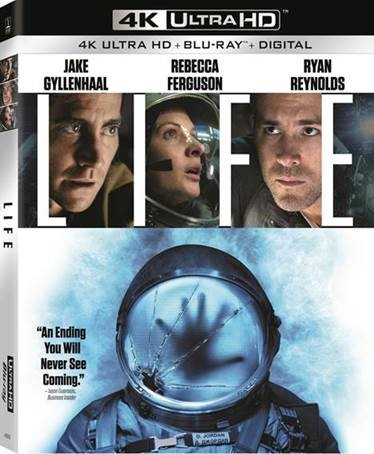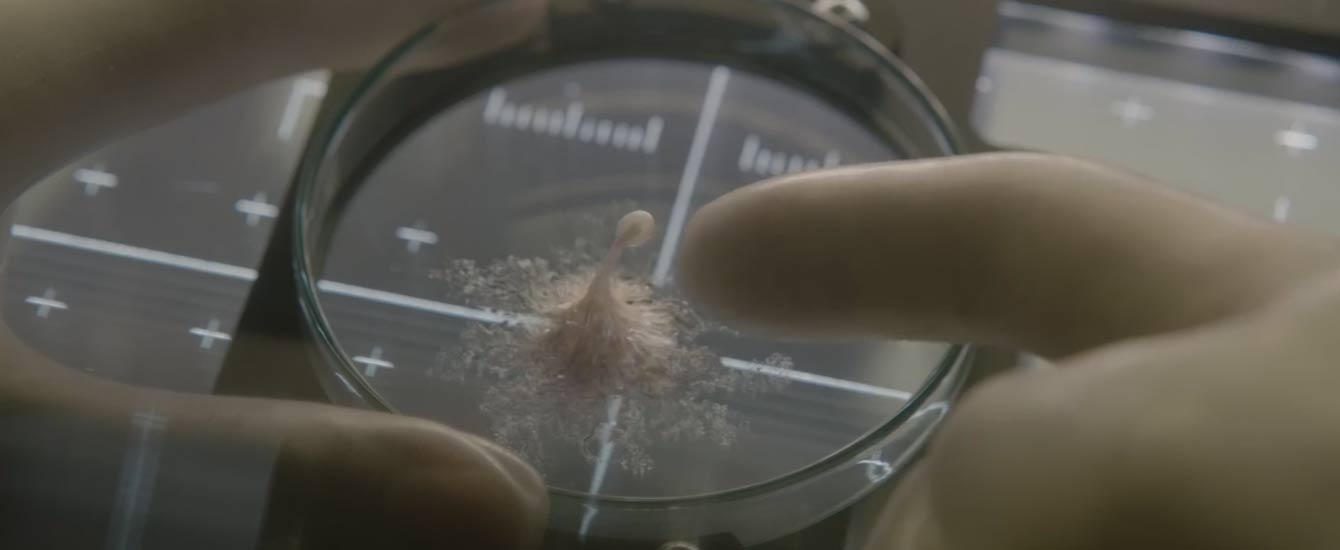Alien from 'Life' Inspired by Truly Bizarre Earth Organism (Exclusive Video)
In the recent sci-fi horror flick "Life," a terrifying, tentacled and seemingly immortal alien named Calvin wreaks havoc on the International Space Station. In a new video, the filmmakers explain the art and science behind this weird extraterrestrial monster.
The clip comes from one of the behind-the-scenes featurettes included with the new digital download, which is available beginning today (June 2). On June 20, "Life" fans will be able to buy the film on Blu-ray, DVD or 4K.

Along with three featurettes, the new releases will include deleted scenes and the never-before-seen "astronaut diaries" recorded by the crew at the space station. ['Life' Brings Terrifying Space Thrills (Photo Gallery)]
In the featurette titled "Creating Life: The Art and Reality of Calvin," director Daniel Espinosa and geneticist Adam Rutherford explain how their alien concept evolved from something not so extraterrestrial: a slime-mold species called Dictyostelium.
"They're not very threatening, but they are very beautiful," Rutherford said in the video. "At a certain point in their life cycle, all the individual cells come together … And they form these incredible 3D structures, and they grow a little bit like mushrooms."
Calvin wasn't always a murderous space octopus. When a sample return mission retrieves the extraterrestrial from Mars, it's only a dormant, single-celled organism. But after getting a little TLC inside the space station's science lab, Calvin begins to grow into a cute, wiggly little mushroom.

While everyone on Earth and in space fawns over the adorable alien species they just discovered, it doesn't take long before things start to get ugly. Calvin grows out of control, tries to kill everyone aboard the space station and recklessly demolishes the orbiting lab in the process.
Get the Space.com Newsletter
Breaking space news, the latest updates on rocket launches, skywatching events and more!
Espinosa said he found video footage of the slime mold fascinating because "you could see an organism that had a different kind of muscularity — that it could change, divide and overtake whatever it was approaching in a different way than we're used to."
To watch the rest of this video and other bonus materials, you can buy "Life" on Amazon Video and other digital platforms today. For an even closer look at Calvin, you can wait for the 4K version to come out on June 20.
Email Hanneke Weitering at hweitering@space.com or follow her @hannekescience. Follow us @Spacedotcom, Facebook and Google+. Original article on Space.com.
Join our Space Forums to keep talking space on the latest missions, night sky and more! And if you have a news tip, correction or comment, let us know at: community@space.com.

Hanneke Weitering is a multimedia journalist in the Pacific Northwest reporting on the future of aviation at FutureFlight.aero and Aviation International News and was previously the Editor for Spaceflight and Astronomy news here at Space.com. As an editor with over 10 years of experience in science journalism she has previously written for Scholastic Classroom Magazines, MedPage Today and The Joint Institute for Computational Sciences at Oak Ridge National Laboratory. After studying physics at the University of Tennessee in her hometown of Knoxville, she earned her graduate degree in Science, Health and Environmental Reporting (SHERP) from New York University. Hanneke joined the Space.com team in 2016 as a staff writer and producer, covering topics including spaceflight and astronomy. She currently lives in Seattle, home of the Space Needle, with her cat and two snakes. In her spare time, Hanneke enjoys exploring the Rocky Mountains, basking in nature and looking for dark skies to gaze at the cosmos.









